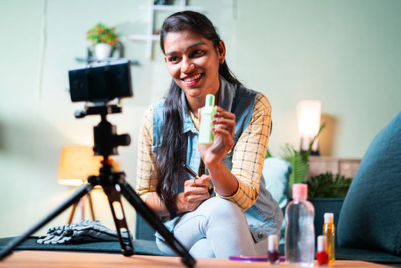
| PARTNER CONTENT |
Unlike other marketing efforts, the upside to influencer marketing is that it’s applicable across any vertical. There are voices in every industry that hold weight and can build brand credibility, but the potential pitfalls of investments in such people have reared their ugly heads in the last year: celebrities inflating their numbers with fake followers, misreading the importance of social media metrics and touting endorsements that don’t mesh with brand identity.
Consider how you’re qualifying influencers. Is it based on the number of followers an influencer has? That can be deceiving. The web’s tastemakers aren’t always as benevolent as brands imagine, and there’s no guarantee that a follower count is going to translate into anything more than dead-end content that's being served to an army of bots.
A good way of approaching these frustrating and often elaborate issues is to take a step back and first ask the question, where’s your niche? The traditional cycle of product spokesmen and empty endorsements has run its course. No longer can brands shoehorn their way into a market through big-name influencer impact alone.
Steps towards practical ROI
Regional influencers should be the new focus. There needs to be some thought put towards the people you’re connecting with, where they are in the world, and what sort of reputation they have with their audience. Find the right person for the right moment. The fashion industry, for example, has taken to this mantra, and the results have been inspiring.
There’s also no need to go it alone. Finding the right platform to manage any influencer campaign is a reasonable way to safeguard against fraud and help manage both the expectations and results of campaigns. Platforms like RhythmInfluence offer sharing analytics to keep campaigns transparent and measurable, as well as access to a tenured team who match brands with relevant influencers to help streamline the process.
“Transparency, accountability and guaranteed ROI should be a given for any brands working with influencers in 2018”, says Charlie Baillie, VP commercial APAC at RhythmOne. “Brands should ensure they work with partners who can deliver measurable ROI, so investments don’t disappear into the fog of inflated social media numbers.”
Like most marketing efforts in 2018, building a unified strategy that connects influencer outreach and programmatic is also crucial and possible. Leveraging data and distributing content across all channels is made much simpler using it, and while the creative, human component of influencer marketing will always take precedence, software has its place in the endeavour as well.
Keep it mutual
Brands also need to foster continued relationships with influencers they welcome into the fold, an opportunity many miss when they simply write a cheque and shoo campaigns out into the world.
A blog post or a social mention shouldn’t be the end game, but the beginning of a fruitful relationship. Partner on content output, offer exclusive products or insight to boost the reputation of the influencer’s own brand, and make the benefits reciprocal. Bringing an influencer on board is not unlike making a business acquisition, and should be approached with the same level of scrutiny and care.





.jpg&h=334&w=500&q=100&v=20250320&c=1)

+(1).jpg&h=334&w=500&q=100&v=20250320&c=1)
.jpg&h=334&w=500&q=100&v=20250320&c=1)


.jpg&h=334&w=500&q=100&v=20250320&c=1)

.jpg&h=268&w=401&q=100&v=20250320&c=1)




